Last updated: January 28, 2020
You need good equipment to get all that information out of the grooves and into your ears, and really experience the power of music.
Serving two masters – analogue and digital
Analogue vinyl is the audiophile format of choice, however some good music is not available on vinyl, existing only on CD. With some modern recordings, CD is the preferred format as the vinyl version is significantly inferior. CD also works better in the car than balancing the record player on your knees. What you need is the best affordable equipment to play both formats.
For CD, that means digital streaming and not a CD player, which is outdated technology inherently incapable of delivering the highest quality sound, unless it is something like the cripplingly expensive but stunning Audio Note kit. CD players have many problems (jitter, timing, physical transport) that are eliminated by streaming, which requires no moving part,. Streaming lossless format files (FLAC) ripped from CD creates the best possible output from a CD source, and with good equipment can sound very close to the quality of vinyl, though in my experience not as good.
For vinyl playback the sky is the limit for expenditure but investment in the best possible turntable will give you a bigger return than on any other component In the early years of consumer hifi, many assumed the speakers to be the most important component, since that is where the sound came from. Current thinking is that speakers simply do as they are told. It is the components closest to the source that do the telling. It all starts with the thing that turns the disc around, and of course the stability and purity of the mains power that drives it around. It is about clean constant power, something which drives equipment brand fetishists crazy.
My Vinyl source: an Avid Acutus Reference SP turntable, SME V tonearm and moving coil low output Dynavector TKR cartridge.
My Digital source: Linn Akurate streaming device. CDs are ripped by computer into lossless FLAC files, which are stored on a Network Aware Server (NAS) box. This is physically connected by ethernet run to the Linn Akurate DS digital streaming player. Armchair control of track selection is through an ipad 1 connected wirelessly to the network through an access point, with the Chorus app controlling both the streamer functions and playlist selection from all 1,000 CDs on the server.
UPDATE 2019 The latest generation of Linn streamer operating system hardware upgrades and control apps require at minimum, a new I-pad 2, and new database management software. Personally I am not going any further down this audio blind-alley, with poor souls whose ultimate ambition is listening to the same music in every room in their house. From here on, it is a vinyl only home.
Amplification
You can expect superior results if you separate pre-amp and power amp functions, and it has been my experience that valve-based pre-amplification can be mixed with solid state main power amplification to good effect. A similar improvement resulted from introducing a valve-based dedicated phono amp to work up the low-output from a moving coil cartridge in place of the MC board of the previous solid state pre-amplifier. Signal-handling is now all valve based from cartridge until it hits the main amplifier.
Linn make good solid-state amplifiers, and there are many other improvements that can be made before their quality becomes a limitation, hence the main amplifier remains the four-channel C4200 Akurate. The main amp, like the speakers, basically does as its told. The biggest investment is in components nearest the source, where it can do the most good (i.e. the least harm to the signal)
I would happily replace the main amp with a valve component but rack space limitations make that very difficult. The base unit on my Atacama Eco Eris rack offers a maximum height of only 200mm, whilst every candidate valve amp seems to require around 10-20mm more height. Stupid really, but the only solution is replace the entire racking system, or move to a bigger house.
The LJC rig in close up
Overview: in the domestic setting
If this looks deceptively minimalist and uncluttered, that is because I have left out all the power cables, interconnects, mains conditioners, which are shown in this master exploded illustration (digital components not included, for clarity) – full story here.
UPDATED July 2020:
Latest additions: Three Russ Andrews Adzorber MkII ‘s and to permit all the mains power purifying devices, a 6x distribution block powered by one PK500 power cable with Rhodium plated plus and fitted with Superfuse, the three adzorbers each fed by a PK100 cable with superfuses.
Power to the People!
However before getting to the beef – the turntable – a word or two about power sources and interconnects. Sources require power: good music reproduction starts life with a good power cable from the mains. This is the Russ Andrews Signature SD Mk II. It can not be overstated how much difference good power cables make to the final listening experience. I have absolutely no understanding why but my experience is that they do.
A futher power refinement, added recently, is a balanced mains transformer to feed the hungry pre-amplifier and power amplifier with very clean stable power. More detail on balanced mains is covered under medium cost tweaks.
Are you well-connected?
The back of any separates hifi system is not a pretty sight, and probably the main reason why wives and girlfriends don’t get on with Hi Fi. Wires. Lots of them:
Wires transport the precious tiny electrical signals that will eventually become music. Some people think of wires as just an electrical connection, others as a hifi component no less important than the amplifier itself. I think wires are important because I have experienced the difference they can make to final sound quality. I can recommend Kimber Select 1030 1036 – though not cheap, they maintain the original quality of the signal passing through, which lesser interconnects impair.
The fact high-end cables are painfully expensive causes hifi trolls much merriment. My ears tell me they work, but I recommend you make up your own mind: it’s your money, your music, and their loss. Pleasure from laughing at other people is a poor second to pleasure from listening to better sounding music, though sadly, not to everyone.
Getting into the groove
A good turntable, arm and cartridge is essential. This is my choice – the Avid Acutus Reference SP. A British turntable manufactured by specialist turntable designer Conrad Mas. It is not a DJ choice as it weighs a ton, has no flashing lights, does not reverse spin or do hand brake turns. However it extracts information from the groove better even than CIA waterboarding.
Below, the monsterous SP power supply (yes they are to scale) briefly, the flagship machine .
Avid Acutus Reference SP upgrade July 2015
Call to Arms
Tonearm: Your turntable needs tonearm which will hold your cartridge rigid in its place at the right angle, and provides effective ergonomic design for problem-free use.

There is nothing as effective as the West Sussex precision-engineered SME 5, an arm whose ergonomics are so fool-proof, it can be operated safely even when your alcohol level wouldn’t permit you to drive a car.
Cartridge: Dynavector low output moving coil cartridge. Dynavector cartridges are among the best Japanese micro-engineering quality. Seen here riding the groove is the Te Kaitora Rua – the beast from the East, which replaced the previous Dynavector DX20. Though the DX was good, the TKR is astonishing, complete with fear-inducing nude design, and bank-manager-phobic price tag.
Valve-based dedicated phono pre-amplifier
A low output moving coil cartridge of the calibre of the Dynavector TKR benefits from a dedicated preamplifier (with its own dedicated power supply). Rather than route its output via the solid state Linn pre-amp unit, the analogue signal is handled by a custom-built valve pre-amp. The impact this has on sound presentation can not be understated..
The analogue pre-amp is by custom audio builder World Designs, and incorporates a very high specification of components in addition to ECC82 valves – Berlin manufactured in the early 1960s, previously unused (new old stock) – valves from the time the music we love was recorded, chronological harmony. (UPDATE 7/2019: Chinese PSvane valves go on trial replacing the Telefunkens. Man-in-a-Shed tells me they sound better.)
Other features include silver plated signal wires, and extra-smoothing capacitors. It is also an opportunity to insert the important mono-stereo micro-switch Linn didn’t think was important enough to include in their designs.
An analogue signal path now extends all the way back to the original musical instruments, including tube-based microphones, tape recorders, cutting lathes and the vinyl medium and cartridge. Only at the phono stage is the signal now passed over to a solid state digital main amplifier.
Wash and Brush Up
You need clean records. Fifty years of accumulated muck and grime is holding back the connection between the stylus and the groove, and creating clicks and pops. There is only one solution: the isopropyl alcohol solution. Watch greasy fingerprints and original vinyl mould-release resist arrest. The Moth Pro Record cleaning machine from Mike Harris’s British Audio Products is noisy but effective, vacuuming the grooves from below as you “wash” the other side.
Cupboard Love
You need somewhere to store your precious records in reasonable harmony with your home. IKEA Expedit are exactly “record sized”. How thoughtful.
Update 2015 – sadly, IKEA have failed to sustain the Expedit range.
IKEA: ” We’ve always liked EXPEDIT. It’s simple, versatile and easy to personalise, which is why we though it was worth a little special attention. (b.s alert!) By adding improvements both in terms of looks and quality, we suddenly realised it had become a new and better piece of furniture, so we decided to rename it KALLAX”
Thinner and lighter (ie it will no longer match your existing units when you want to expand your record collection.)
Same box size (so what, it already did what we wanted)
Even more durable (meaningless green word, “durable”)
Rounder edges make it safer for children. (Tell your kids to look where they are going -and make them safer for life)Reduced dimensions make it sleeker and more environmentally-friendly. (Astro-turfing: the environment doesn’t need IKEA’s friendship.If they were genuinely worried about their environmental impact, why not stop making anything from wood altogether? Oh, so not that worried.)IKEA = Modern Corporate Narcissism, creating the illusion of progress, trying to make you feel better about yourself, and them, while changing for the worse.
And the Winner is…
The end result – a music system that doesn’t look too much like a hifi showroom – which when you mount a record on the turntable and sit back to enjoy, should sound like this:
Beautiful. Mobley, Morgan, Silver, Chambers, and Blakey, all still alive in London and playing their hearts out. Cup of tea, chaps?
Now all you need to do is go “collect jazz”
There are many more things you can do to improve what you hear. Some inexpensive, some a bit more expensive. Or may be you are still in a quandry about which path to take – vinyl or CD?
Next: the importance of being well-connected


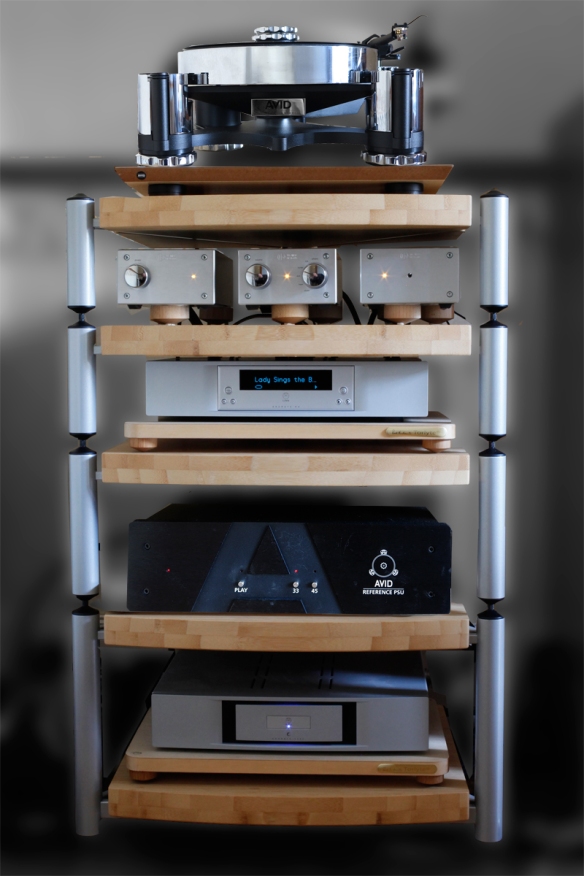
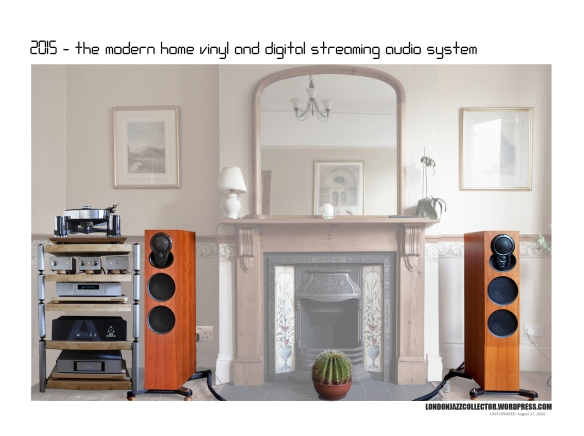



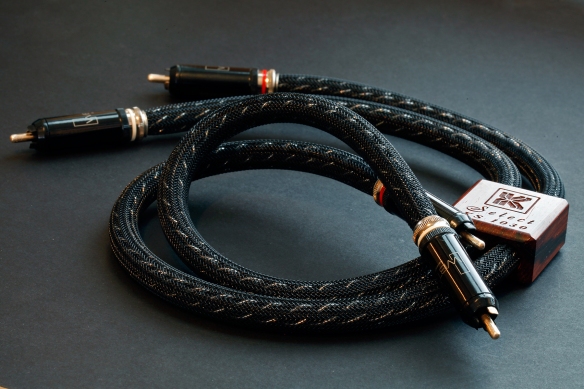

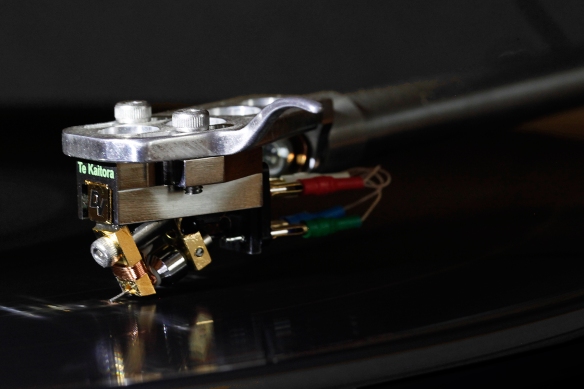
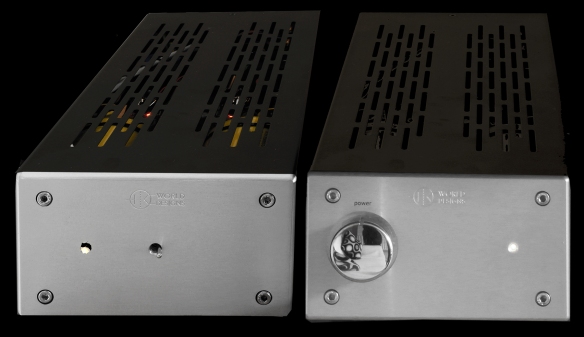




LJC, what did you make of the PSVane tubes? I’m a huge fan of the Telefunken E88CC myself — but it would be nice to know there was a current-production, less-expensive alternative…
LikeLike
I have to eat some humble pie here: having trumpeted the quality of Telefunken New Old Stock vintage valves, I have three hi-fi buddies who are not in sway to nostalgia. They all urged me to go for the PSVanes which they experienced as a superior upgrade. I did as I was told, and yes, the improvement was undeniable – greater transparency and presence, doing something right.
LikeLike
Wow. I’ve listened to a lot of tubes, and I’ve found the NOS Telefunkens massively superior to anything else I’ve tried. But it’s a relief to know there’s something cheaper that works. Any suggestions on where to buy them? A Google search for “E88CC PSVane” doesn’t turn up anything promising.
LikeLike
Mine were sourced via a friend who I believe obtained them from a British supplier, The Hi Fi Collective
https://www.hificollective.co.uk/components/who-is-psvane.html
No idea where they get them from apart from manufacturing cintacts in China.
LikeLike
Alas, the tube I’m looking for — E88CC or 6921 — isn’t made by Psvane. Your Telefunken is an ECC82, I see, which Psvane makes as a 12AU7. Fingers crossed they’ll make a 6921 in the future…
LikeLike
I wonder about such an expensive equipment being herded on one simple rack. And the turntable on the top of it ( more than 1m high) – NO GO!
LikeLike
And the worst thing: the left loudspeaker is placed behind the rack and the turntable with only a few cms of distance from them both. Whow!
LikeLike
Replacement Victorian house in South London with larger listening room configuration, minimum £1m plus. That is Whow! Perhaps Graz (?) is cheaper.
I make the best of what I have. I do not claim that what I have is the best, far from it. My listening room belongs also to long-suffering Mrs LJC.
LikeLike
Isopropyl alcohol can be very caustic on plastic and metal parts. Personally, I used alcohol to “clean” my Yamaha dust cover once and it fogged over. I had to use polish to bring the clarity back. I use water and a shammy and sometimes dish soap to clean records and remove dust particles. It is a benign recipe.
LikeLike
You should do whatever you feel comfortable with.
Most of my records have over fifty years of contamination, mould release, condensed cigarette smoke, fingerprint grease, household dust and god knows what. Vinyl groove walls need to be clean, and contain just musical information
Chamois leather simply polishes the vinyl surface, moves detritus around, presses it deeper in the groove, and any soap residue coating the groove wall impedes the stylus tracking. Possibly benign but ineffective, or worse regarding dish soap.
IPA at the level of dilution I recommend (1 IPA :4 distilled water plus 0.05 surfactant) penetrates deep into the groove, dissolves contaminants, and is vacuumed out by an RCM within minutes, leaving nothing behind. It has none of the effects you seem to have suffered with your tt dust cover (which surprises me, but rigid acrylic is a different type of plastic, I guess)
Works for me, but I always say, do whatever you are comfortable with.
LikeLike
Enjoyed reading your articles but I can’t say I have experienced the CD problems you have encountered. I own 3 cd players Meridian 507, Denon 1510 & Marantz SA 15S1. I also own Gyrodec & Colloro Idler Drive with Lenco Arm.
Very impressed with Idler drive sound.
LikeLike
You’re right, Nass. CD problems such as the ones mentioned are non-existent. It’s also wrong to say that streaming requires no moving parts – it does, as long as you are using a hard disc. But the question is irrelevant, because there is absolutely no difference between data being successfully read from a hard disc, a CD, or a USB flash drive.
LikeLike
use an SSD disk drive for top reading speed without motors, magnetic fields, no risk of skipping in case of shock, longer battery life and well, the best audio experience compared to the analog world
LikeLike
Hi,
I found your nice blog by googling. Question does your AVID platter wobble? I have just aquired one and unfortunately the platter wobbles. It is just 0.3-0.5mm but I can see it from 3 meters away.
(And yes everything is in level and belts run true)
Bit sad because the sound quality wise the deck is superb.
LikeLike
Platter wobble – aaargh! no it doesn’t and nor should it.
The platter spins on a bearing which has a bush that seems to be critical –
http://www.avidhifi.com/bearing.htm
Sounds to me you have lost your bearings, to coin a phrase. I suggest you make a phone call to Conrad Mas, the designer and boss of Avid, and see what he suggests. It doesn’t sound like a dealer problem – more a factory job. . He’s a nice, friendly bloke, I am sure he wants happy customers – perhaps he will suggest a factory overhaul. It’s a bind but with pieces of kit like this a long drive to the factory is sometimes the only way out of the problem.
Good luck.
LikeLike
Hello and thanks for the assistance (it was a bearing issue). Brand spanking new Sequel SP is on its way 🙂
LikeLike
SME V tone arm Scottish!!!!
What?
When was Steyning in Sussex moved to heathen parts?
And, if you want a better sound, my advice would be to replace the Avid with an SME turntable, and the Linn amplifiers (never their strong point) with some valves.
.
LikeLike
Deft bit of gerry-mandering by the SNP, the nation within a nation (answer the West Lothian Question, Nicola!). In exchange, we have moved Middlesborough north of the border, they are welcome to it.
Lack of fact-checking, no excuse, but with the Internet you can guarantee that if you get something wrong someone will quickly correct you.
Steyning • West Sussex • BN44 3GY • England
I think I lumped them in with Linn, who continue to be on “the wrong side” of the border.
Thank you.
LikeLike
Your article was great except for the part where you use isopropyl alcohol on your vinyl. You are effectively drying out your vinyl while making the album very brittle over the long run and more than likely changing the sound dynamics of the albums.
LikeLike